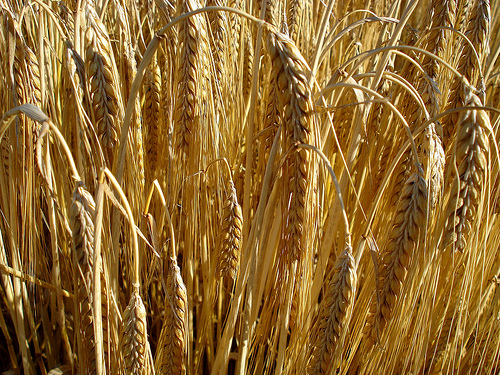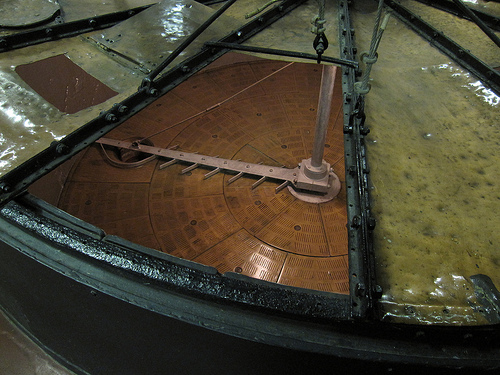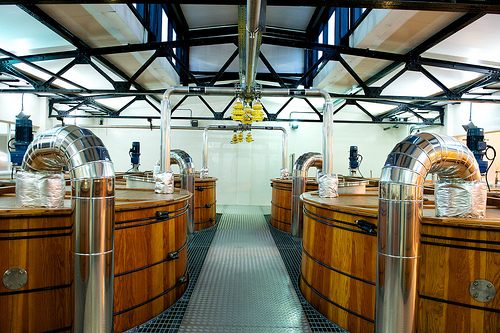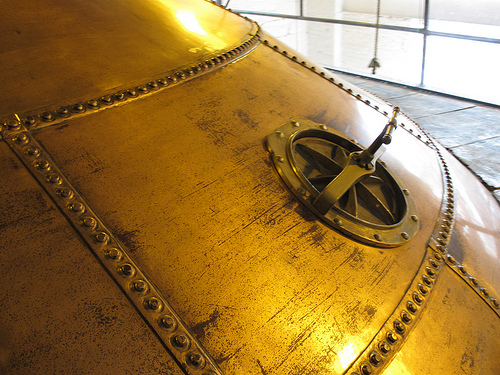WHISKY Brands
The whiskies of the Highlands are known world-wide for their mature subtle flavours which have become synonymous with fine living. Understanding the process by which distillers have achieved their famous single malts further heightens the experience that comes from savouring the delicious flavours native to Scotland.
Barley & Water

(img credit: Christian)
To begin the brewing process, freshly harvested barley grains are spread out across the wooden floor of the malting house to be steeped in water. As the grains begin to sprout, big wooden paddles stir the mash, causing the starches in the barley to break down into sugars. When the distiller judges that the mixture is just right, the sprouted barley is poured into red-hot peat-fired kilns to stop the germination and prepare the mash for the next step.
Grist, Mash & Wort

(img credit: Rostad)
When the sprouted barley is dried in the kilns, it is moved to the mills to be ground into the grist. This mixture is once again mixed with water to produce a mash, which is transferred to a mash tun using pails made of pine or cypress to draw off the wort. The ground, wet mash set aside in wooden barrels where the fermentation process begins.

(img credit: Rubin)
Wash & Distillate
Once the mash has fermented, it can be moved into copper pot stills where the ingredients are put through a series of steps, first producing low wines and working their way up to find single malt whiskies.

(img credit: Barnum)
Testing is done to determine the finest, which are moved for the last time into casks were they can be left to mature — usually for at least a decade. For optimum results, the barrels selected for maturation have previously been used for storing other spirits such as bourbon, sherry, port or rum.
Cask
Since fine single malt whiskey matures in the cask — and not in the bottle like wine, it has to spend a very long time in its cask. In fact, each year, up to 2% of the spirits evaporate, which is sentimentally called “the Angels’ share” which is one reason that whisky that has matured longer is considered the most valuable.

(img credit: Cosentino)
Whisky Tasting
To truly enjoy a glass of fine Scottish single malt, regardless of the brand, there are a few customary routines that help you to make the most of experience. Before you even taste it, observed how the liquor swirls around in your glass, noting the richness of the colour. As you swirl the whisky in the glass, it should ideally form a teardrop shape with “legs” that slowly flow down from the lip of the glass — ideally in a teardrop shape. How slowly the teardrops form and how far apart the legs are in the glass is a sure-fire way to judge the age of the single malt.
When you first sip the whisky, take time to determine the “mouth feel” or mellow, tingling sensation which is an indicatation of how expertly the distiller has aged his concoction. To fully appreciate the aroma, hold the first sip in your mouth until you feel the vapors move into your nose, consequently allowing you to smell as you are tasting. Swirl the whiskey about on your palette so it can fully detect the many flavours and subtle undertones that reflect the region where it was distilled.
Finally, it is time to swallow formula which was made from Scottish barley which grew on the hillsides long ago. This moment is referred to as the “finish” of the experience, when you get to throughly enjoy the full experience of a fine blended Scotch whisky.
- Glenmorangie Sherry Wood (31/07/2013)
- Bunnahabhain Single Malt Scotch Whisky (18/04/2013)
- Aberfeldy 12 years old (15/04/2013)
- Macallan Gold (11/04/2013)
- Glen Grant (08/04/2013)
- Jim Murray’s Whisky Bible Awards 2013 (25/03/2013)
- Kavalan (20/02/2013)





